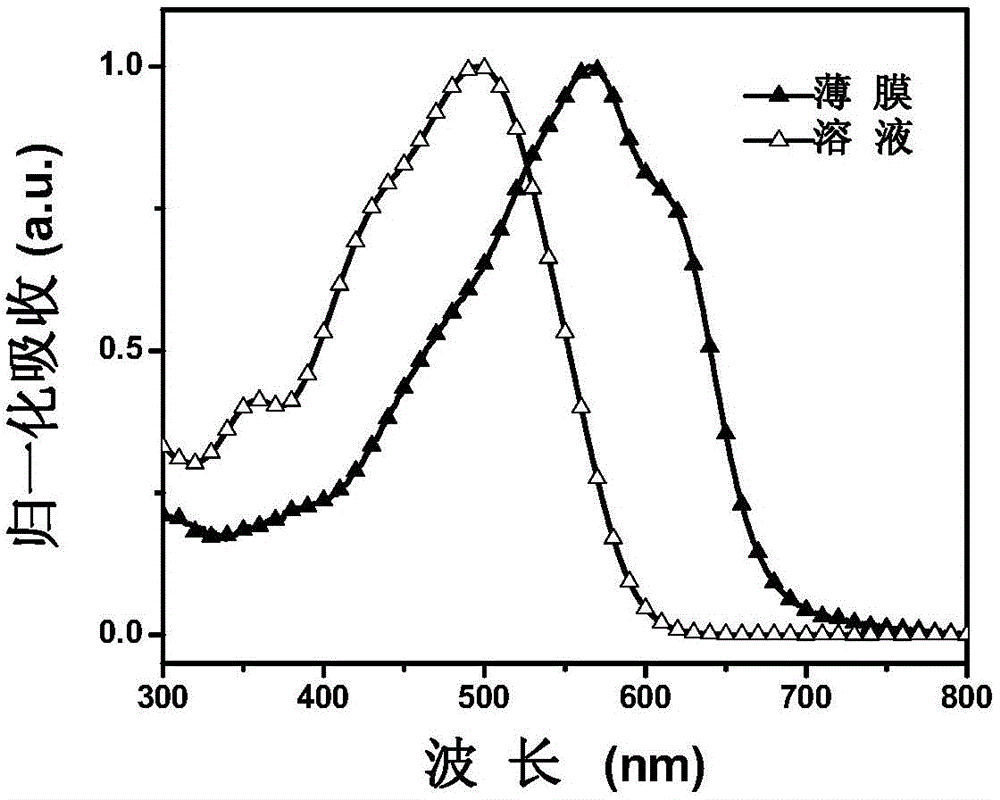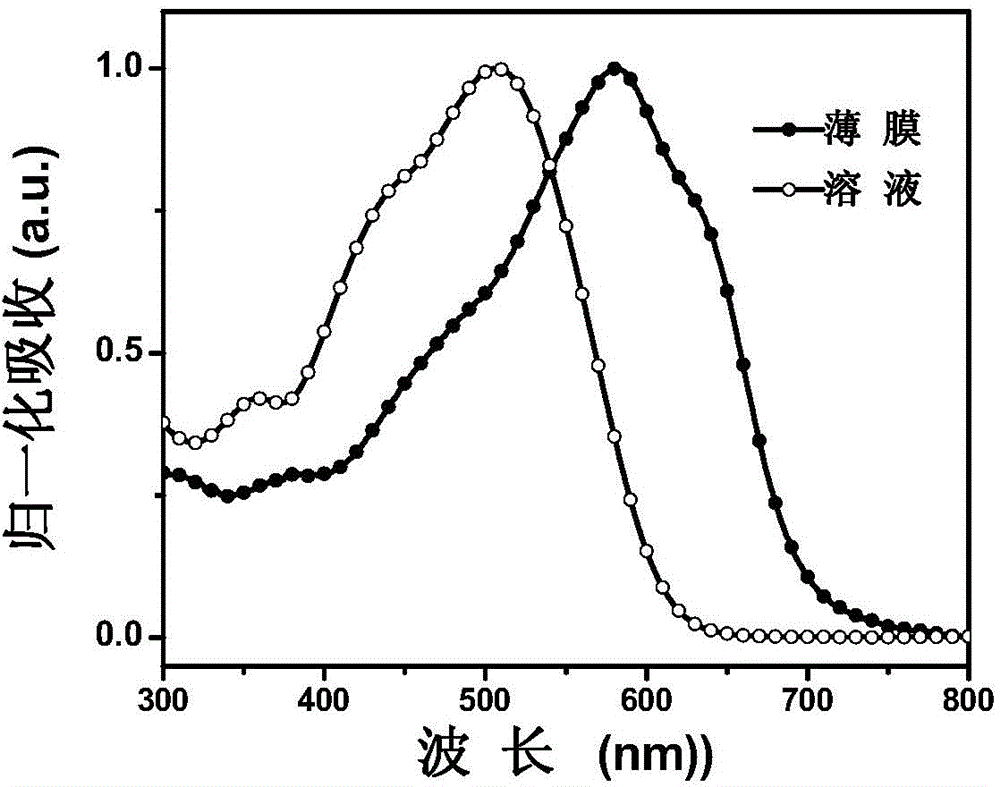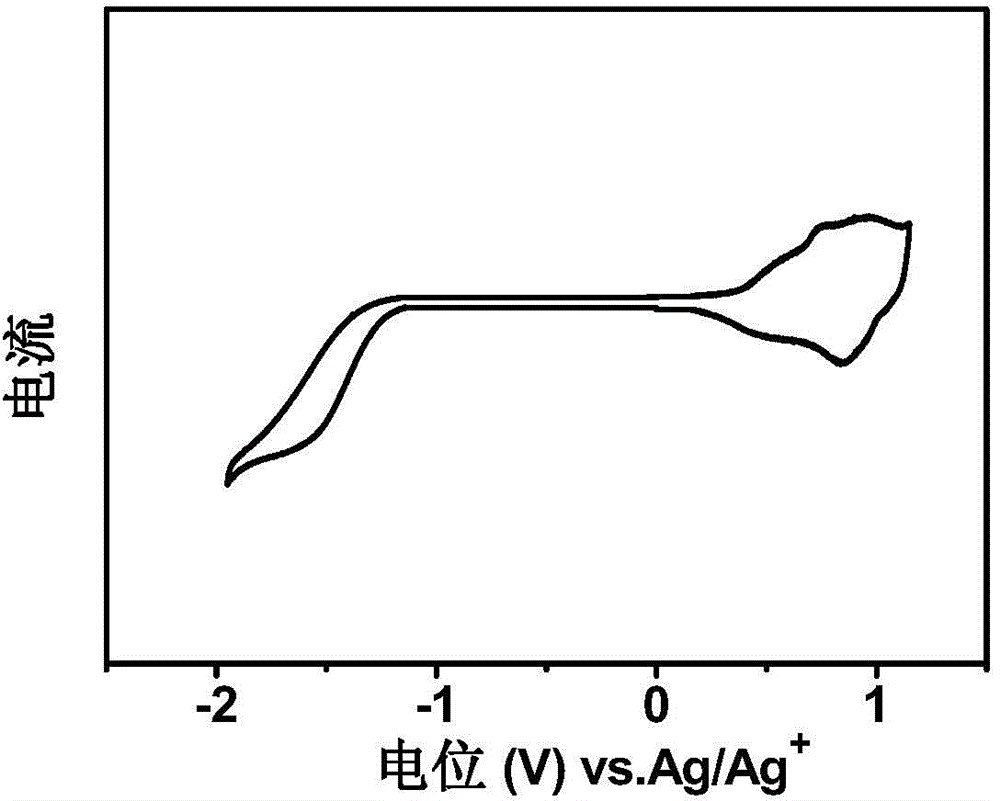Soluble organic photovoltaic micromolecule material with high fill factor, preparation method and application of material
An organic photovoltaic and small molecule technology, which is applied in the fields of photovoltaic power generation, organic chemistry, semiconductor/solid-state device manufacturing, etc., can solve the problems of unsatisfactory blended active layer morphology, unfavorable accumulation between molecules, and low charge extraction ability. The effect of good solubility, clear molecular weight and good air stability
- Summary
- Abstract
- Description
- Claims
- Application Information
AI Technical Summary
Problems solved by technology
Method used
Image
Examples
Embodiment 1
[0060] The synthesis of embodiment 1, BDTT (in the formula III, R 1 =C 2 h 4 C 6 h 13 compound of)
[0061] The chemical reaction process is as follows (references for specific reaction steps and reaction conditions LijunHuo, Angew.Chem.Int.Ed.2011, 50, 9697-9702)
[0062]
Embodiment 2
[0063] Embodiment 2, Br SCHO (compound 10)
[0064] The chemical reaction process is as follows (specific reaction steps and reaction conditions refer to J.Zhou, X.Wan, Y.Liu, G.Long, F.Wang, Z.Li, Y.Zuo, C.Li, Y.Chen , Chem. Mater. 2011, 23, 4666-4668.).
[0065]
Embodiment 3
[0066] Embodiment 3, B3SCHO2BDTT (compound 11)
[0067] The chemical reaction process is as follows (specific reaction steps and reaction conditions refer to J.Zhou, Y.Zuo, X.Wan, G.Long, Q.Zhang, W.Ni, Y.Liu, Z.Li, G.He , C. Li, B. Kan, M. Li, Y. Chen, J. Am. Chem. Soc. 2013, 135, 8484-8487.).
[0068] The feed ratio of compound 6 and compound 10 is 1:2, the reaction temperature is 100°C, the reaction time is 12 hours, the amount of palladium catalyst is 2% of the molar equivalent of compound 10, and the product 11 is obtained as a maroon solid with a yield of 80% .
[0069] In addition, the reaction conditions can also be: the feed ratio of compound 6 and compound 10 is 1:2, the amount of palladium catalyst is 2% of the molar equivalent of compound 10, the reaction temperature is 100 ° C, the reaction time is 48 hours, and the product 11 is jujube Red solid, yield 78%.
[0070] In addition, the reaction conditions can also be: the feed ratio of compound 6 and compound 10 ...
PUM
 Login to View More
Login to View More Abstract
Description
Claims
Application Information
 Login to View More
Login to View More - R&D
- Intellectual Property
- Life Sciences
- Materials
- Tech Scout
- Unparalleled Data Quality
- Higher Quality Content
- 60% Fewer Hallucinations
Browse by: Latest US Patents, China's latest patents, Technical Efficacy Thesaurus, Application Domain, Technology Topic, Popular Technical Reports.
© 2025 PatSnap. All rights reserved.Legal|Privacy policy|Modern Slavery Act Transparency Statement|Sitemap|About US| Contact US: help@patsnap.com



